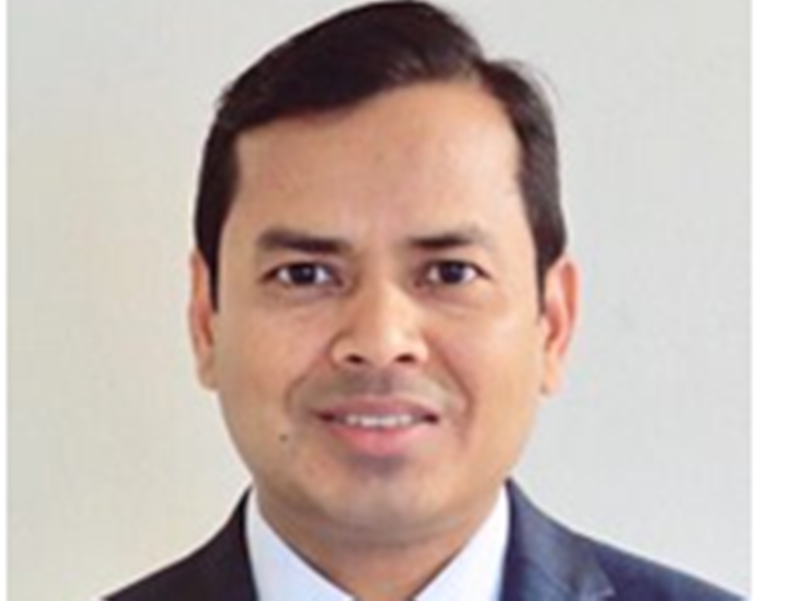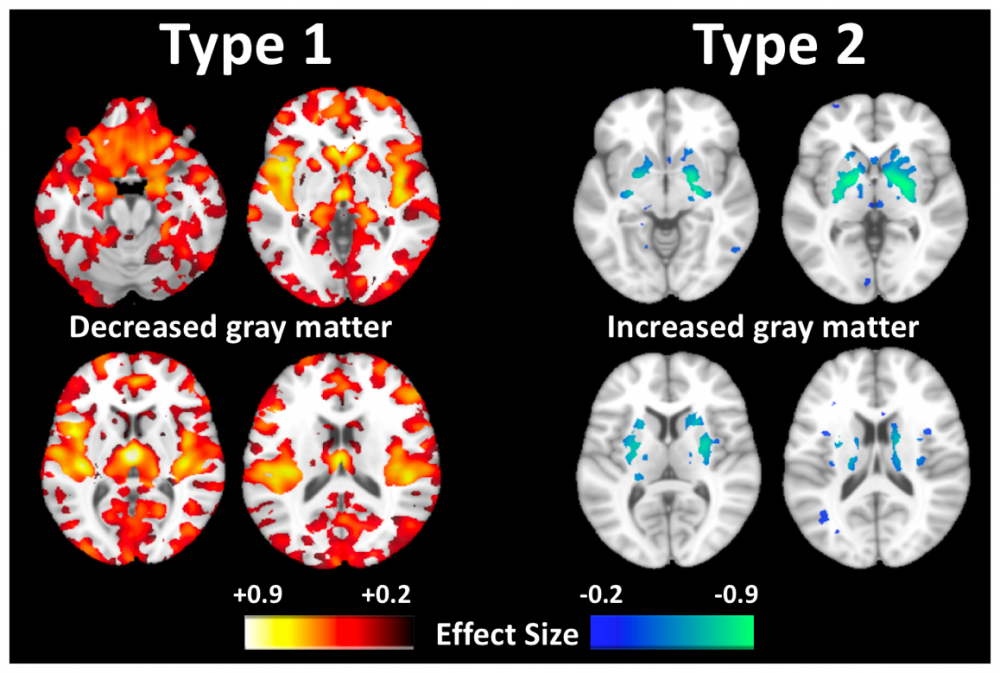

Nepali scientist Dr. Ganesh Chand and colleagues have discovered a Second Type of Schizophrenia. Schizophrenia is a mental disorder that presents with hallucinations, delusions, disruptions to normal emotions, and cognitive problems. Although antipsychotic medications are available to manage the clinical symptoms of schizophrenia, how they affect a particular patient is poorly understood and the treatments have been failed.
The novel findings, reported in an international journal Brain, shed light on understanding the heterogeneous brain structures of schizophrenia patients. Researchers analyzed brain structural magnetic resonance images (MRI) using machine learning methodologies.

(Figure: Brain’s gray matter volumes of Schizophrenia Type 1 and Type 2 compared to healthy controls).
The study involved 671 humans—364 healthy controls and 307 Schizophrenia patients. Type 1 (63%) of patients had widespread brain volume reductions while Type 2 (37%) of patients had increased volumes in the subcortical basal ganglia and internal capsule but their other brain regions were similar to healthy controls. In previous investigations, all patients were categorized as a single group whose brain structures resembled with Type 1 of the current study. “Type 2 (37%) was a big surprise to us” says Dr. Ganesh Chand, lead author and postdoctoral scientist in the Department of Radiology at the University of Pennsylvania, a prestigious Ivy League University located in Philadelphia, USA.
The study was a part of the ‘big-data schizophrenia consortium’ led by Prof. Dr. Christos Davatzikos and colleagues of the University of Pennsylvania in collaborations with researchers from 15 Universities worldwide, including from Germany, China, United Kingdom, Netherlands, Brazil, Spain, Italy, and Australia. The study co-authors include imaging physicists, engineers, machine learning scientists, statisticians, medical doctors, psychologists, and psychiatrists. Dr. Chand said, “Given their notable brain differences, these types may have different origins, may progress diverse course of illness, and thus may require different clinical treatment planning and intervention approaches.” In the near future, when a schizophrenia patient comes to the clinic/hospital, the patient will be categorized as Type 1 or Type 2 for the better personalized clinical assessment and treatment.

(Figure: Dr. Ganesh Chand, University of Pennsylvania, Philadelphia, USA).
He was born in Surkhet district of Nepal. He completed primary and lower secondary education from Himalaya Secondary School (Cholpa, Surkhet), SLC from Janata Secondary School (Rammapur, Bardiya), ISc and BSc from Mahendra Multiple Campus (Nepalgunj, Banke), and MSc in Physics from Tribhuvan University (Kirtipur, Kathmandu). He was a Lecturer of Physics at Kathmandu Model College (Baghbazar, Kathmandu) and St. Xavier’s College (Maitighar, Kathmandu). He has obtained PhD in Biophysics (Neurophysics) from Georgia State University (Atlanta, USA), and postdoctoral research trainings from Emory University (Atlanta, USA) and the University of Pennsylvania (Philadelphia, USA).
Full article will be available on February 27, 2020 in the link:
https://academic.oup.com/brain/article-lookup/doi/10.1093/brain/awaa025
Comment